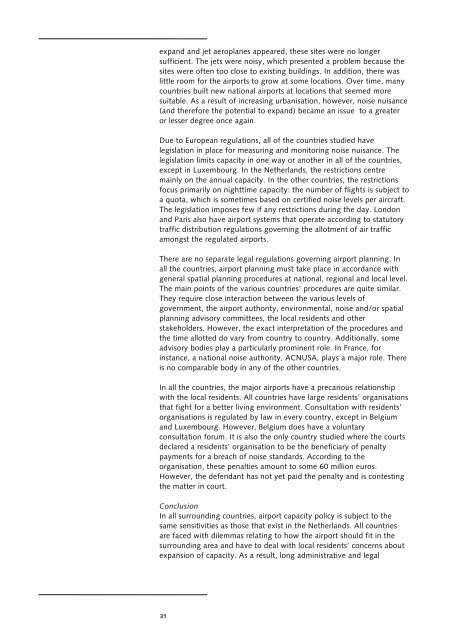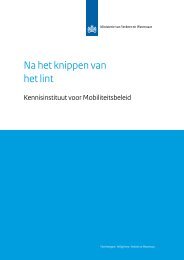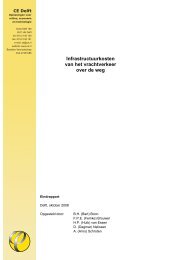Internationale benchmark capaciteit luchthavens - Kennisinstituut ...
Internationale benchmark capaciteit luchthavens - Kennisinstituut ...
Internationale benchmark capaciteit luchthavens - Kennisinstituut ...
Create successful ePaper yourself
Turn your PDF publications into a flip-book with our unique Google optimized e-Paper software.
expand and jet aeroplanes appeared, these sites were no longer<br />
sufficient. The jets were noisy, which presented a problem because the<br />
sites were often too close to existing buildings. In addition, there was<br />
little room for the airports to grow at some locations. Over time, many<br />
countries built new national airports at locations that seemed more<br />
suitable. As a result of increasing urbanisation, however, noise nuisance<br />
(and therefore the potential to expand) became an issue to a greater<br />
or lesser degree once again.<br />
Due to European regulations, all of the countries studied have<br />
legislation in place for measuring and monitoring noise nuisance. The<br />
legislation limits capacity in one way or another in all of the countries,<br />
except in Luxembourg. In the Netherlands, the restrictions centre<br />
mainly on the annual capacity. In the other countries, the restrictions<br />
focus primarily on nighttime capacity: the number of flights is subject to<br />
a quota, which is sometimes based on certified noise levels per aircraft.<br />
The legislation imposes few if any restrictions during the day. London<br />
and Paris also have airport systems that operate according to statutory<br />
traffic distribution regulations governing the allotment of air traffic<br />
amongst the regulated airports.<br />
There are no separate legal regulations governing airport planning. In<br />
all the countries, airport planning must take place in accordance with<br />
general spatial planning procedures at national, regional and local level.<br />
The main points of the various countries’ procedures are quite similar.<br />
They require close interaction between the various levels of<br />
government, the airport authority, environmental, noise and/or spatial<br />
planning advisory committees, the local residents and other<br />
stakeholders. However, the exact interpretation of the procedures and<br />
the time allotted do vary from country to country. Additionally, some<br />
advisory bodies play a particularly prominent role. In France, for<br />
instance, a national noise authority, ACNUSA, plays a major role. There<br />
is no comparable body in any of the other countries.<br />
In all the countries, the major airports have a precarious relationship<br />
with the local residents. All countries have large residents’ organisations<br />
that fight for a better living environment. Consultation with residents’<br />
organisations is regulated by law in every country, except in Belgium<br />
and Luxembourg. However, Belgium does have a voluntary<br />
consultation forum. It is also the only country studied where the courts<br />
declared a residents’ organisation to be the beneficiary of penalty<br />
payments for a breach of noise standards. According to the<br />
organisation, these penalties amount to some 60 million euros.<br />
However, the defendant has not yet paid the penalty and is contesting<br />
the matter in court.<br />
Conclusion<br />
In all surrounding countries, airport capacity policy is subject to the<br />
same sensitivities as those that exist in the Netherlands. All countries<br />
are faced with dilemmas relating to how the airport should fit in the<br />
surrounding area and have to deal with local residents’ concerns about<br />
expansion of capacity. As a result, long administrative and legal<br />
31




